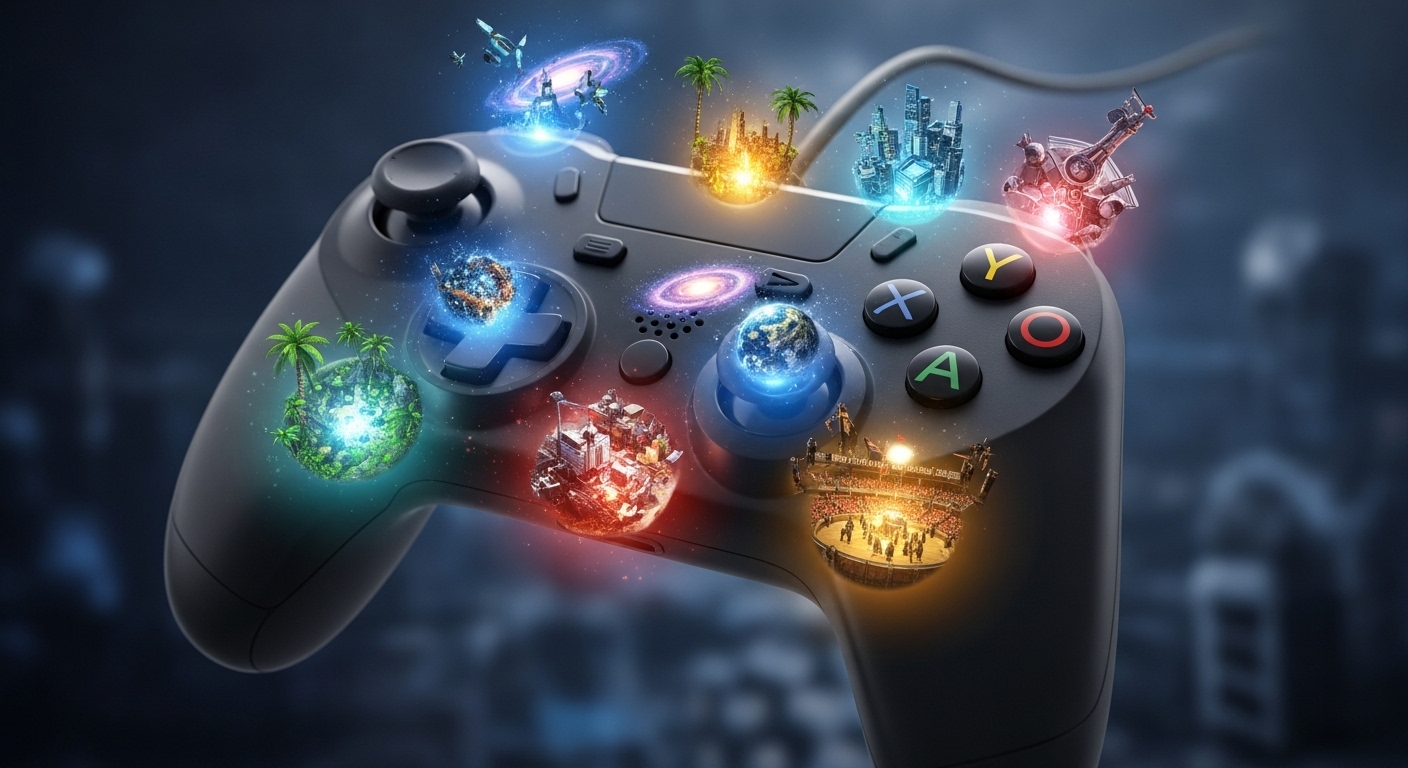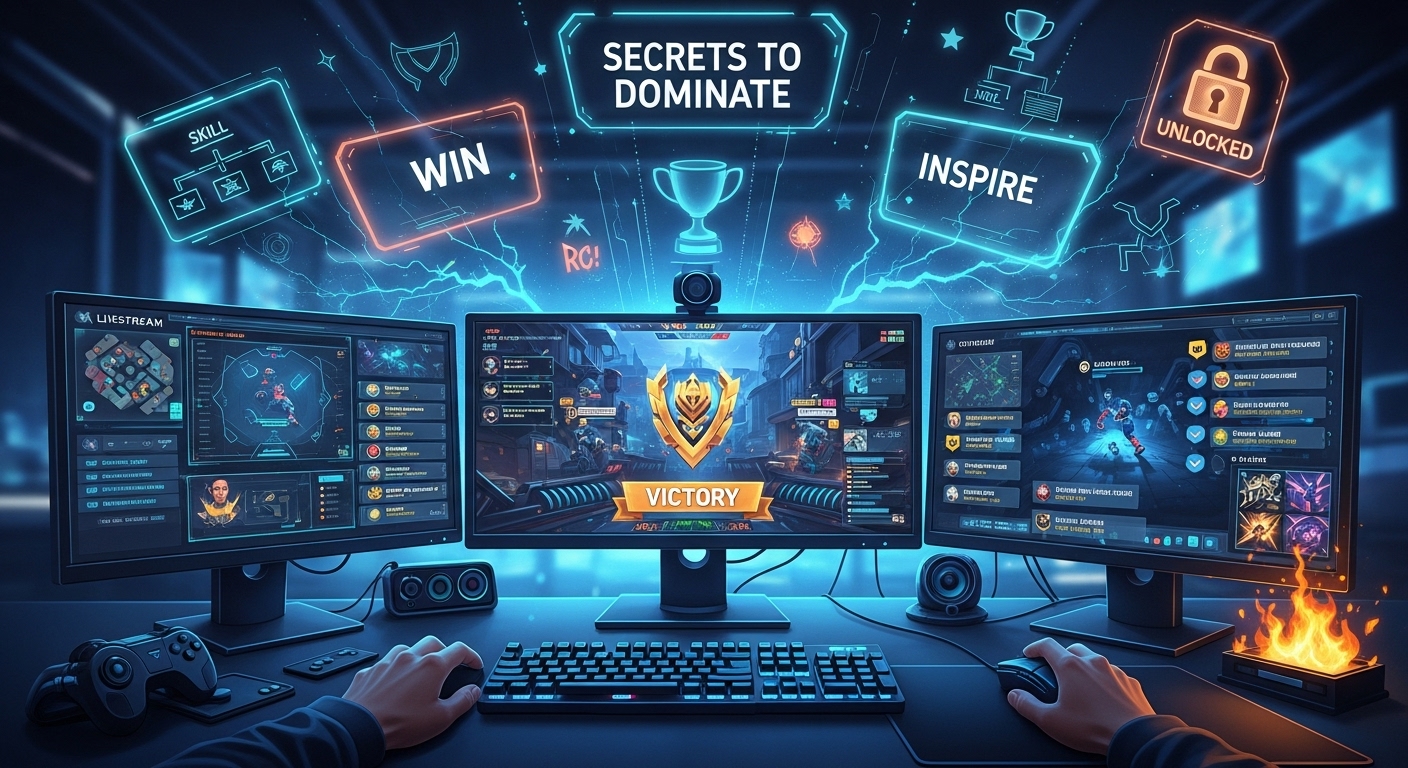Gaming, once a niche hobby confined to dimly lit arcades and basement consoles, has transformed into one of the most powerful cultural and technological movements of the modern era. It’s no longer just a pastime; it’s a medium of storytelling, a professional pursuit, and a reflection of human creativity. To understand gaming today is to explore the intersection of art, technology, and emotion — a digital realm where imagination knows no limits.
The Early Days: When Simplicity Ruled the Screen
The story of gaming begins in the 1970s, with titles like Pong and Space Invaders introducing the world to interactive entertainment. These games were simple — a paddle and a ball, or a row of alien invaders descending from above — but they sparked something new in people. For the first time, screens were not just to be watched; they were to be played with.
Arcades became social hubs, glowing sanctuaries for kids and adults alike. Each machine represented a new frontier, a different kind of challenge. The early games didn’t rely on complex stories or lifelike graphics. They were built on the idea of pure competition — of pushing your limits for a higher score and etching your name in glowing letters at the top of the leaderboard.
What these early days taught the world was that gaming had the power to engage, to challenge, and to connect. Even in their simplicity, these experiences laid the groundwork for the sophisticated art form gaming would become.
The Console Revolution: Bringing the Arcade Home
As technology advanced through the 1980s and 1990s, gaming followed closely. The introduction of home consoles — the Atari 2600, Nintendo Entertainment System, and later the Sega Genesis and PlayStation — changed everything. No longer did you have to feed quarters into a machine to play. The living room became the new arcade, and gaming became a household activity.
This era saw the birth of iconic characters who would become cultural symbols. Mario, Sonic, Link, and Donkey Kong weren’t just pixels; they were companions to millions of players around the world. These games began to tell stories, to build worlds, and to create memories that would linger for decades.
With each new console came innovation. Better graphics, improved sound, and more complex gameplay created immersive experiences. Players could now embark on epic quests, solve intricate puzzles, and explore vast digital landscapes. The sense of wonder was palpable. Every new release felt like stepping into a new universe, and every cartridge held an adventure waiting to unfold.
The Golden Age of PC Gaming: Strategy, Creativity, and Community
While consoles dominated living rooms, another revolution was quietly brewing on desks and office tables: the rise of PC gaming. In the 1990s and early 2000s, PCs offered possibilities that consoles couldn’t. Games like Age of Empires, Diablo, StarCraft, and The Sims showcased the potential of personal computers to handle complex systems and detailed worlds.
PC gaming wasn’t just about reflexes — it was about strategy, creativity, and experimentation. Players could build civilizations, manage virtual lives, or conquer galaxies. It also gave birth to one of gaming’s most enduring traditions: modding. Fans began to modify existing games, creating new content, characters, and even entirely new experiences. This creativity blurred the line between developer and player, turning gaming into a form of collaboration.
The PC also connected gamers in a new way — online. Through early networks and dial-up connections, players could challenge opponents across the world. What began as a niche feature would later evolve into the backbone of modern gaming: online multiplayer.
The Internet Era: A World Without Borders
When the internet became widespread in the 2000s, gaming underwent another transformation. No longer limited by geography, players could now compete, cooperate, and communicate globally. Titles like World of Warcraft, Counter-Strike, and Call of Duty redefined what it meant to play.
World of Warcraft introduced millions to the concept of the MMORPG — a massive, persistent online world where players could live alternate lives as heroes, warriors, and adventurers. For many, it wasn’t just a game; it was a second home, a community. Players formed friendships, alliances, and rivalries that stretched across continents.
Online gaming also gave rise to esports — competitive gaming as a spectator sport. What began as small local tournaments evolved into massive global events watched by millions. Skilled players became celebrities, teams gained sponsorships, and gaming arenas filled with cheering fans. The notion of the “gamer” changed forever; it was no longer about who played, but how they played.
The Rise of Storytelling: Games as an Emotional Medium
As technology improved, so did storytelling. Games began to explore deeper themes — loss, love, morality, and identity. Titles like The Last of Us, Bioshock, and Journey proved that gaming could be as emotionally powerful as any film or novel.
Players were no longer mere participants; they became co-authors of their experiences. Choices had consequences, and stories could unfold in multiple directions based on decisions made along the way. This interactivity made gaming unique among art forms. It was not just about witnessing a story — it was about living it.
Independent developers also entered the scene, creating deeply personal games that explored unconventional subjects. These indie games — often made with smaller budgets but boundless creativity — pushed the medium forward. Games like Undertale, Celeste, and Hollow Knight showed that innovation often comes from passion rather than power.
The Social Dimension: Gaming as a Shared Experience
Modern gaming isn’t confined to screens and controllers. It’s a social phenomenon that transcends generations and cultures. Whether through multiplayer experiences, online communities, or streaming platforms, gaming has become a shared language that unites millions.
Platforms like Twitch and YouTube turned gaming into entertainment for audiences who might not even play themselves. Watching someone else play — once an odd idea — became a global pastime. Streamers and content creators built careers out of their personalities and gameplay skills. Viewers didn’t just tune in to watch games; they came for humor, connection, and belonging.
Gaming also brought people together in unexpected ways. Long-distance friendships were maintained through shared adventures, families bonded over cooperative games, and communities formed around shared interests. In a world often divided by boundaries, gaming became a bridge — a way for people to connect across distance and difference.
The Technological Leap: Graphics, Physics, and Immersion
The modern gaming landscape is defined by technology that would have seemed impossible a few decades ago. Photorealistic graphics, realistic physics, and powerful processors have made virtual worlds breathtakingly detailed. From the sprawling landscapes of Red Dead Redemption 2 to the neon glow of Cyberpunk 2077, games today are visual masterpieces.
But beyond graphics, immersion has become the key pursuit. Virtual reality (VR) and augmented reality (AR) have opened entirely new dimensions of play. With a headset, players can step directly into their games — to swing a sword, explore alien planets, or paint in 3D space. These technologies promise to blur the line between the digital and physical worlds even further in the years ahead.
Artificial intelligence has also entered gaming, creating smarter enemies, dynamic storylines, and lifelike characters who respond uniquely to player actions. The result is a more organic and unpredictable experience, one that feels alive and evolving.
The Business of Gaming: Industry, Innovation, and Influence
Gaming is now one of the largest entertainment industries in the world — larger than film and music combined. It drives innovation not only in technology but also in marketing, design, and storytelling.
Developers today range from massive studios producing blockbuster titles with budgets rivaling Hollywood films to small indie teams crafting passion projects that capture hearts. The diversity of voices in the industry ensures that there’s something for everyone — from casual mobile games to deep narrative experiences.
Microtransactions, downloadable content, and subscription services have changed how games are consumed. While these business models have sparked debate, they’ve also allowed for continuous updates and community-driven development. The industry is constantly evolving, shaped by both player demand and creative ambition.
The Psychological Side: Why We Play
What makes gaming so compelling? It’s not just about entertainment; it’s about human nature. Games tap into our desire for challenge, mastery, and connection. They provide a sense of purpose, accomplishment, and escape.
In a game, failure is not final — it’s part of the learning process. Players are encouraged to experiment, to adapt, and to grow. This feedback loop of effort and reward mirrors real-life motivation in a controlled, satisfying way.
Moreover, games offer emotional refuge. In stressful times, they can be comforting worlds to retreat into. For some, gaming is a social lifeline — a way to maintain friendships and find belonging. For others, it’s an outlet for creativity and self-expression.
At their best, games remind us that play is not just for children. It’s a fundamental part of being human — a way to learn, to explore, and to connect with the world around us.
Diversity and Representation: Changing the Game
One of the most important developments in modern gaming is the growing emphasis on diversity and inclusion. As the global gaming community has expanded, so too have the stories being told.
Games now feature protagonists from all walks of life, representing different cultures, genders, and identities. Developers are exploring themes that were once considered taboo — mental health, social justice, identity, and belonging. This inclusivity has not only enriched gaming but has made it more relatable and authentic to players worldwide.
Representation matters because games shape how we see ourselves and others. By broadening perspectives and inviting empathy, gaming continues to evolve as a force for understanding as well as entertainment.
The Future of Gaming: Where Do We Go From Here?
Looking ahead, the possibilities seem limitless. Cloud gaming promises to make high-end experiences accessible on any device, removing hardware barriers. Artificial intelligence may soon generate personalized worlds and adaptive narratives that respond to every player uniquely.
Virtual reality will become more natural and social, turning gaming into a shared sensory experience. Augmented reality could blend games seamlessly with the physical world, transforming streets, parks, and homes into playgrounds.
Beyond technology, the spirit of gaming — exploration, creativity, and connection — will continue to guide its evolution. As long as humans seek stories, challenges, and companionship, gaming will endure and expand. It’s no longer confined to consoles or screens; it’s part of our cultural DNA.
Gaming and Society: Beyond the Stereotypes
For decades, gaming carried stereotypes — that it was antisocial, childish, or violent. But as generations have grown up with controllers in hand, those perceptions have faded. Gaming has proven to be educational, therapeutic, and socially enriching.
Educational games teach problem-solving, collaboration, and critical thinking. Simulation games allow players to experiment with complex systems like city planning or economics. Even action games can improve reflexes, spatial awareness, and decision-making.
More importantly, gaming has been used in therapy and rehabilitation. From helping patients recover motor skills to providing emotional support in difficult times, games are increasingly recognized as tools for healing and growth.
The Cultural Impact: Gaming as Art
Today, gaming stands shoulder to shoulder with other forms of art. Like film, literature, or music, it can evoke emotions, provoke thought, and inspire change. The combination of visuals, sound, narrative, and interactivity gives gaming a unique power to immerse players completely.
Art museums have begun showcasing games as cultural artifacts. Universities offer degrees in game design and interactive storytelling. Critics analyze games not just for entertainment value, but for their themes, aesthetics, and social commentary.
In the end, gaming is not just about winning or losing — it’s about experience. It’s about the feeling of discovery when you uncover a secret, the rush of victory after countless failures, the connection you form with characters who aren’t real but feel alive. That is art in its purest form.
Conclusion: The Game That Never Ends
Gaming has come a long way from the blinking pixels of Pong to the cinematic worlds of today. It’s a story of innovation, imagination, and human connection — a journey that mirrors our own evolution as a species.
At its heart, gaming is about play — a fundamental part of who we are. It’s about curiosity, challenge, and joy. It’s about stepping into other worlds to better understand our own.
As technology advances and society changes, gaming will continue to grow, adapt, and inspire. It will tell new stories, create new heroes, and bring people together in ways we can’t yet imagine.
Because in the end, gaming isn’t just something we do. It’s something we live. It’s a reflection of the human spirit — always reaching for the next level, always ready for another adventure.
And in that sense, the game never truly ends.



